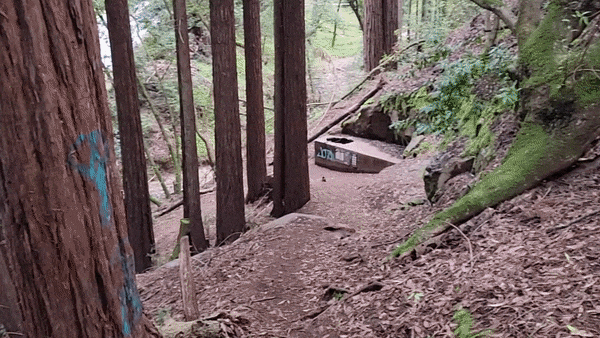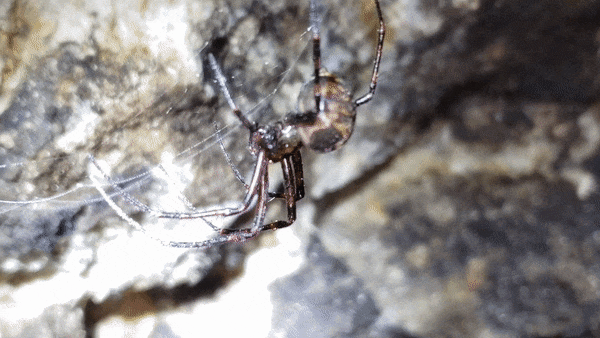Hello folks who wonder how people got to work on time before alarms were invented,
There are some experiences that just leave a mark in your life whether they are positive or negative. The birth of your first child, your first breakup, your first paycheck, winning an Oscar, getting 28 likes on your TikTok dance video, spending your first night in jail after murdering your partner, graduating high school... you get the idea.
Recently, I had a couple of those experiences that I will share with you today.
One of them was going to a local minor league baseball game. In my honest opinion, baseball as a sport should be illegal to watch if you have not drunk at least 3 glasses of beer/wine before the game or have an IQ of more than 20.
The other was venturing into a cave alone. (Now, who is the one with the lower IQ eh?)
Let's first do a primer on how this cave was formed. We get rains every year, some years more, some years less. Irrespective of whether California is in a drought or not, rainwater contains dissolved carbon dioxide that rain drops absorb from the atmosphere on the way to hitting your phone screen. When this rain water hits the ground, it will seep into the ground. But not before collecting more carbon dioxide from the decaying organic life in the ground. Once this water seeps into the ground it will trickle into rocks underneath. If that rock happens to be limestone, the rainwater will over thousands of years start dissolving the calcium carbonate in that rock and make small cavities. And as the time progresses with more water widening the cavity, it becomes a cave.
In simpler words, imagine you liked eating candy as a kid. So, you eat candy and never floss or brush your teeth, sooner or later you will have a cavity in your tooth. Keep on eating more candy and it will become a cave by the time you are an adult. (*this message was not sponsored by the dental association of North America)
Anyway, enough of this theory, let's get a glimpse of what it looks like. This is what I saw from a distance.
Standing outside the entrance, this is what I saw. Isn't it inviting?
For folks who have never ventured into a cave, caves can be perceived as claustrophobic to some individuals because of the limited space to move around and the lack of natural light sources. The darkness in caves is albeit different from the darkness one encounters when walking on a trail at night. Even though you might not be using a light source like a flashlight at night on a trail, there are various sources of ambient light like moonlight, starlight and porch lights on the horizon which enable you to find your way around in a somewhat limited manner. The same cannot be said about being in caves where the lack of ambient light and absorption of light by dark-colored rocks makes you really dependent on your flashlight. When I climbed down the ladder, this is what I was greeted by.
Going past the chamber where freshmen students experience the joys of marijuana and express their artistic talents, the place becomes progressively less trashed by human signs. But the low ceilings and narrow passages make it harder to stand upright.
That is when I heard a faint voice asking "Do you surf bro?". Surprised, I looked to my left and it turned out to be a spider endemic to Santa Cruz. Meet Dolloff Cave spider which is one of the rarest spiders in North America since they are limited to the caves in Santa Cruz and neighboring tunnels. The fascinating thing about these spiders is that they are troglophiles i.e. they prefer to live and reproduce in caves but can survive outside caves if push comes to shove. Unlike other spiders that scram in the dark when you shine the flashlight on it, this spider was unaffected by my constant flashlight on it.
Excuse me for the amateur footage, but it was really hard to stay in one position while slipping on the wet rocks, along with holding the flashlight in one hand.
Since this is a rare species, I spared it the abuse of handling it for a better shot on its eyes or other curiosities. I progressed deeper into the cave. Just so you have an idea of the area where the spider lives, see below.
This exploration was cut short because I ran into a room that was flooded with all the recent rainwater seeping in. Since I did not pack my swimming trunks for this trip, I decided to turn back.
While we are on the topic of rains this year, owing to all the hysteria about drought in California for the past few years, a bunch of kids started to write to Santa asking for more rain instead of toys. After this constant nagging by these kids, Santa decided to honor their request this year.










No comments:
Post a Comment
Did you learn something new in this post? Let us know in the comments below